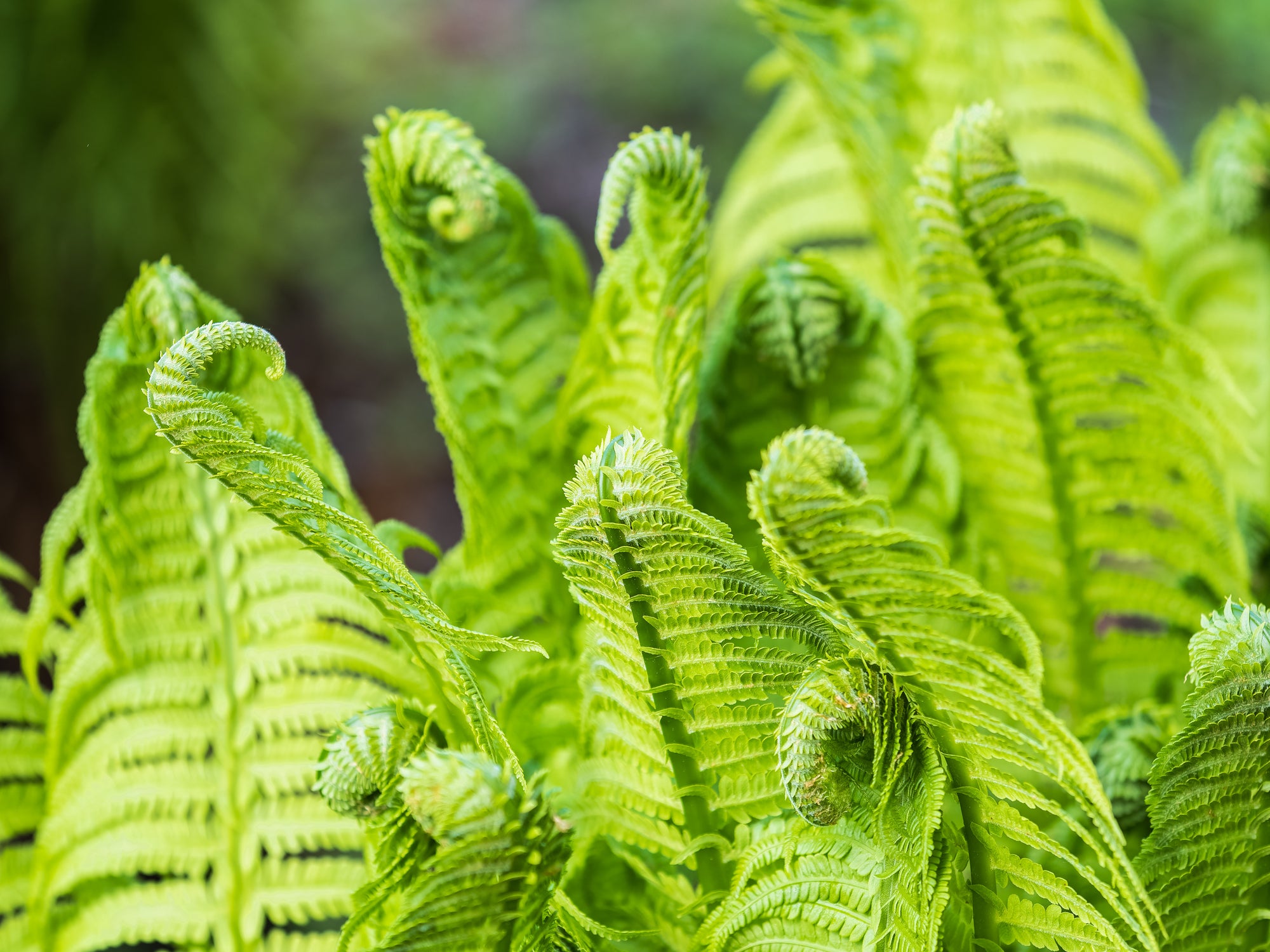
Fiddlehead Fern
The term “fiddlehead fern” is one of the most specific names in gardening. This pretty epithet is actually a description of what the plant looks like early in the growing season, not a botanical or common name. To call a fern a fiddlehead is to point to the season when it first appears above ground in a tight curl and a bright green color. As the name suggests, it is this curled frond that gives the fiddlehead fern its name, as it resembles the scroll at the top of a violin or fiddle. But some ferns, most notably the Ostrich Fern, have young fronds that are specifically known as fiddleheads, and they are not only ornamental in the landscape, but also one of the most delectable springtime vegetables.
What makes fiddleheads so interesting in the landscape is the season that they provide. Like a countdown until leaves and blossoms appear, the day that the curled shoots first appear in the garden marks a time when you can literally count the days of emergence, as they slowly unfurl their feathery fronds one day at a time. The contrast of the sculptural curled fronds against the bare or still early landscape is quite striking. This is a bonus and fun seasonal treat that tells the gardener that the rhythm of the changing of the seasons in the landscape is once again underway. This is more than simply a plant in the garden, it’s a reminder of the cycle of nature.
Fiddleheads are one of the highlights of spring cooking. Soft, tasty, and a real treat, fern fiddleheads are a mild and earthy vegetable that many liken to asparagus, green beans or even a subtle nutty flavor. They can be steamed, sautéed, or simmered and are a good source of vitamins C, A, and E, plus a long list of other vitamins and minerals, as well as being rich in antioxidants. Fiddleheads are easy to harvest as well, as they’re simply the young fern fronds, about two inches in height, that are tightly coiled. These can be harvested once they have reached the proper height but while they are still tightly furled. Fiddleheads are only available for a very short season, however, as once they have unfurled they lose their tenderness and become woody and inedible.
Ferns, in general, are some of the easiest plants to grow in a garden. They require very little care, and are tolerant of most soil types as long as they are not overly dry or boggy. Fiddlehead-producing ferns like the Ostrich Fern are no exception. They prefer part to full shade, with consistently moist, rich soil. They are a great plant to use to fill in shady borders and woodland gardens, near streams or ponds, or in a moist dappled shady area that would otherwise go bare in the garden. They are also quite hardy, and will return year after year, often forming dense colonies.




